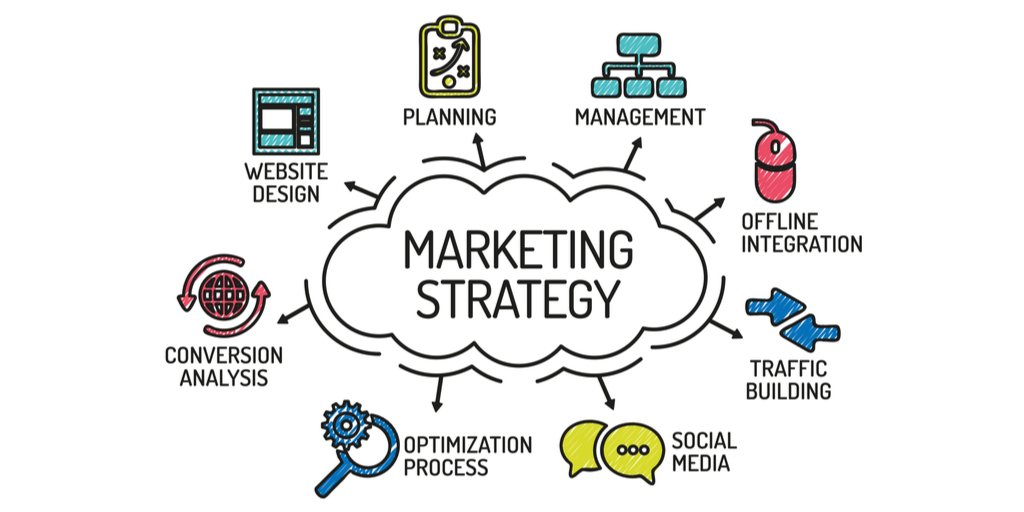
Sales and marketing are often thought about as two separate entities – but they don’t have to be. The two notoriously don’t have the strongest working relationships, both using each other as a scapegoat for missed targets and poor conversion. Although their daily operations differ, good things can come of the two working closely together.
Recognising how both teams differ is crucial, but figuring out ways that the two can dovetail is even more vital. If both departments are pulling in the same direction towards the same end goal, then the potential for growth is massive.
As time progresses, more businesses are recognising this. Therefore, the relationship between the two departments is constantly evolving and improving. This post will explain the ongoing relationship between the pair and how a close bond can benefit your B2B tech business.
We’ll cover:
Marketing encourages leads and initially builds relationships with potential customers through a variety of different channels and methods. In modern marketing, businesses tend to use a mixture of online and offline efforts to try and maximise the potential reach. This includes methods like flyering, event marketing, newsletters and a holistic digital marketing network too.
As customer buying habits have evolved, the way businesses are carrying out their marketing has changed too. Digital marketing practices recognise the way customers research and buy their products and play right into their hands. A lot of this ties in with the inbound methodology of nurturing a sale down the buyer’s journey, rather than being in your face and bullish.
An inbound marketing approach not only has a positive effect on the number of leads that you generate but also the quality of the leads that your marketing team pass on to your sales team. This ultimately leads to more leads being converted and generating healthier growth.

Marketing teams reach out to your customers and provide them with knowledge and value from your published content. This constant value gains the trust of the visitor and keeps them returning to your site whenever they have an issue. Engaging visitors and showcasing what your business has to offer is the main role of your marketing team.
After your marketing department has drawn in the leads, it’s time to pass them onto sales to convert them. They then work hard to develop a one on one relationship with the customer, taking them from having an interest to signing on the dotted line.
Your sales team will address the specific needs of the customer and will provide a tailored situation to each one. They will then use the best practices to convert leads into a sale and over the long term, a loyal business advocate.
As we mentioned, the relationship between these two departments has improved drastically over the past decade. And it’s for the greater good of your business that this relationship continues to be fruitful. After all, when these two collaborate effectively they can produce amazing results for your clients – and your business too, of course.
According to research, aligned organisations achieved an average of 32 percent annual revenue growth, while less aligned companies reported an average 7 percent decline in revenue.
When the two work together, not only does it make for impressive results but it can lift the entire business’ morale too. Nobody wants to work in a place that is filled with bickering and department politics, do they? High team morale makes for increased productivity, which can only mean good things for your business.

Marketing and sales teams working together allow for better-qualified leads. Think about it, if they waste their time trying to convert unqualified leads, it’s not going to end well. Sales will blame marketing and vice versa for the downfall of the sale. When your teams are aligned properly, they’re always communicating which allows for vital information to be passed more freely.
Teams that aren’t on the same wavelength don’t communicate properly, which means that information for the buyer personas is off. Therefore, companies can end up targeting the wrong audience – which isn’t ideal.
Harvard Business Review points out that if sales and marketing teams work together their key business metrics improve. In particular, sales cycles become shorter, market-entry costs go down, and the cost of sales decreases.
However, given most senior sales and marketing leaders understand this, here are some figures:
By understanding your customers and having more accurate buyer personas, your teams will then have shared ownership of them and can help deliver a smoother buying experience for everyone involved.
Further Reading – What is Customer Relationship Marketing?
The level of feedback that both departments are willing to provide will become clearer and more detailed too if they work closely together. Team members from different departments may feel uncomfortable making suggestions about somebody’s work who they don’t know. So, that closer connection between both sides may benefit the level of critique provided if something is incorrect.
Sales and marketing departments working together is important if you want to stay ahead of the competition. A lot of marketing involves researching what your nearest competitors are doing, so with this information, marketing can inform sales teams of the necessary tactics they need to apply to stay ahead of others.

Over time, your sales team are likely to hear the same kind of questions from your prospects. So, if they then pass that knowledge onto your marketing, you can start to craft content that’s specifically tailored towards those questions. This content will then be used to help your prospects to make a smarter, well-informed decision.
If sales and marketing teams don’t work closely together, your business may suffer from the following impacts:
It’s one thing being aware of the benefits that aligning your sales and marketing teams can bring to your business but for it to work, you need to put a process in place for your workforce to stick to. Some helpful tips that you can implement are:
This departmental alignment is heavily reliant on communication – so regularly organising and attending meetings is a good way of keeping everybody in the loop and on the same page. Share processes, resources, offer support and best practices from the offset. These meetings are good for setting expectations too.

It also isn’t limited to just business meetings either. Take every opportunity to strengthen that bond by doing social things too. Whether it’s popping out for a drink after work, or even organising a monthly game of football – they both allow you to get to know the other department out of the work environment.
Have an inclusive email that gets sent to both the sales and marketing teams. You can use this to pass information in both directions so that nothing gets missed.
Your sales teams are interacting with prospects all the time but unless these conversations are recorded, there are no notes of their findings. So, rather than creating content blindly, work collaboratively with your sales team to produce content that your prospects want to see.
A great way of doing this is by holding regular brainstorming sessions. That way, the meetings are short, sweet and full of productivity. Or, why not open shared documents that both teams can dump their ideas in as and when they like. Both ways are quick and easy ways of collaboration and aligning the two departments.

Having marketers available for calls allows them to hear straight from the prospects mouths. Not only is this a great learning experience but it can also help you shape your future content too. So, make sure that you’re blocking out time for marketers to jump on calls and listen in.
Or even arrange calls where marketers have the opportunity to quiz prospects with their questions.
Your sales teams will be experts at giving sales demos, but sometimes they might need the assistance of a marketer to help. Ask your team regularly if they have trouble with specific questions during calls and facilitate the necessary training they need.

So, as you’ve seen a strong relationship between both sales and marketing is crucial for the growth and success of your business. If both departments work closely together, the impact of the inbound methodology can work wonders for your company.
One way you can further your success is by hiring an account-based marketer to work with your teams and help personalise your efforts. They can then take all the findings from both departments and put them into practice to maximise the chances of winning over plenty of clients.
Subscribe to our fortnightly newsletter to hear about our latest podcasts, blogs, career advice & jobs.